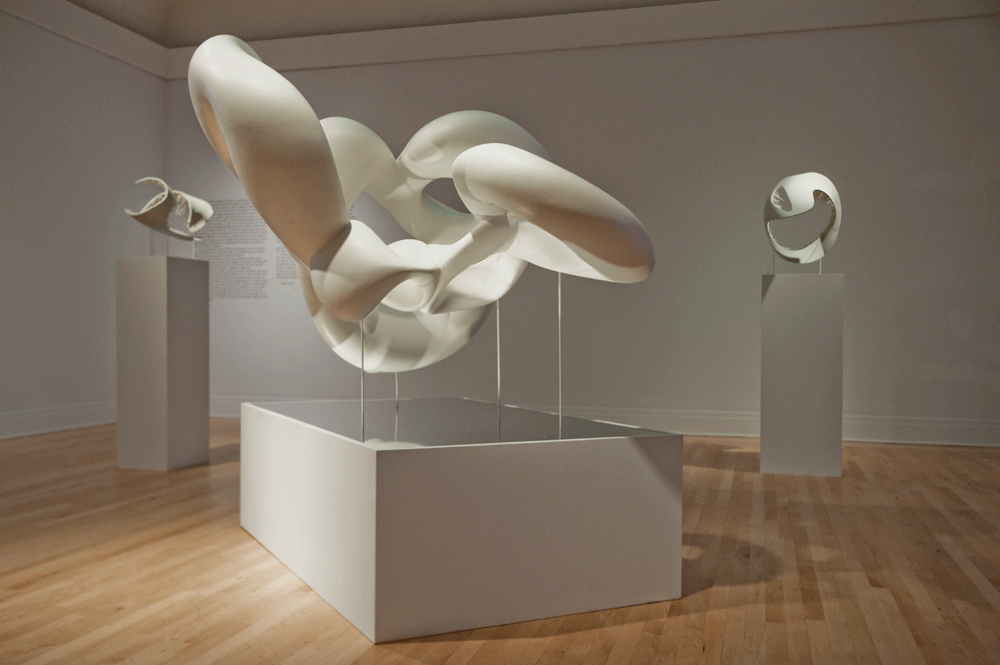Other Space Odysseys
Canadian Centre for Architecture, Montreal, Canada
Canadian Centre for Architecture, Montreal, Canada

The late William Safire – President Nixon’s bright young speechwriter – was ordered to craft something lyrical in case the first lunar mission failed. ‘Fate has ordained’, his draft began, ‘that the men who went to the moon to explore in peace will stay on the moon to rest in peace.’ Given the mission’s high risks and Cold War genesis, the word ‘peace’ seemed incongruous when I read Safire’s speech in the catalogue for ‘Other Space Odysseys’, which presented Alessandro Poli’s Apollo 11-inspired architectural musings from 40 years ago alongside recent considerations of outer space from architects Greg Lynn and Michael Maltzan. Yet the exhibition supported Safire’s Utopian turn: pessimistic though Poli and his Superstudio colleagues were, the moon landing advanced their architectural re-think; since space conquered us rather than vice-versa, Poli argued, architecture must become ‘interplanetary’.
Infused with late 1960s radical Modernism, the results combined art with anarchism to deliberately disrupt the bourgeois aesthetic reverie. Photomontages such as Nuovi paesaggi rurali (New Rural Landscapes) and Nuove architetture lunari (New Lunar Architecture, both 1970–1) juxtapose football pitches and country folk with the Apollo 11 landing, as if Neil Armstrong and Buzz Aldrin had built an actual bridge to the moon. This impossible architecture aligns Poli with concurrent architectural radicals like Andrea Branzi, while the chaotic editing and lo-fi sound of his film Architettura interplanetaria (Interplanetary Architecture, 1970–1) produce a grating yet humorous effect reminiscent of Jean-Luc Godard’s contemporaneous work.
Poli’s ruminations – which, at the Canadian Centre for Arcitecture (CCA), included the hypothetical architectural drawing Piper (1966) and speculations about Zeno – link lunar exploration to architectural Modernism. If Modernism investigated a discipline’s formal or social bases, then nothing inverts the aspirations of Minoru Yamasaki’s World Trade Center – completed in 1970 – like the astronauts’ photos depicting Earth as an insignificant speck. As CCA Director Mirko Zardini writes in his catalogue essay, space travel informed architecture’s move from producing things to producing ideas, a shift that was explored by ‘Other Space Odysseys’.
Lynn’s New Outer Atmospheric Habitat, or N.O.A.H., (2004), designed for Jörg Tittel and Ethan Ryker’s movie Divide, imagines moving eight billion people onto artificial planets. The sleek, curving models suggest Star Trek vehicles crossed with some sort of mind-numbing triaxial plots. The looping structures for New City (2008) reiterate this sense of graphing, the spikes of various lengths inside them connoting different population densities. With its accompanying video, New City extrapolates from digital connectivity’s explosion, projecting, Lynn says, the world as one virtual destination. Strangely elusive, the self-consciously futuristic look of these works seems deliberately outmoded.
Maltzan’s building for the Jet Propulsion Laboratory (JPL) reverses Lynn’s extrapolation from Earth to space. Sheathed in irregularly-sized windows and containing rooms of uneven shapes and dimensions, this pentagon evokes what Maltzan takes as the shift in scale that JPL personnel encounter daily: say, a commute versus a satellite’s journey to Saturn. Rather than mimic structures from contemporary astronomy, though, Maltzan seeks ‘conceptual elasticity’, an architecture that will morph in sync with astronomy’s advances.
While such overlaps and differences animated this show, submerged complications enriched it further. For instance, Lynn is connected to Poli through both film production and by generating forms with animation software – today’s version of architecture by movie camera. Conversely, that Lynn views space from Earth while Maltzan longs to see the reverse betrays other divergences: Lynn’s leading-edge projects embrace spectacle (such as United Architects’ World Trade Center proposal); Maltzan’s most innovative work addresses homelessness. Meantime, Maltzan’s JPL proposal remains unbuilt, but his conviction that astronomers should think about our planet was affirmed when JPL completed NASA’s first LEED gold-certified structure. Such complexities lie dormant in ‘Other Space Odysseys’, an interesting exhibition that didn’t realize how interesting it actually was.




















